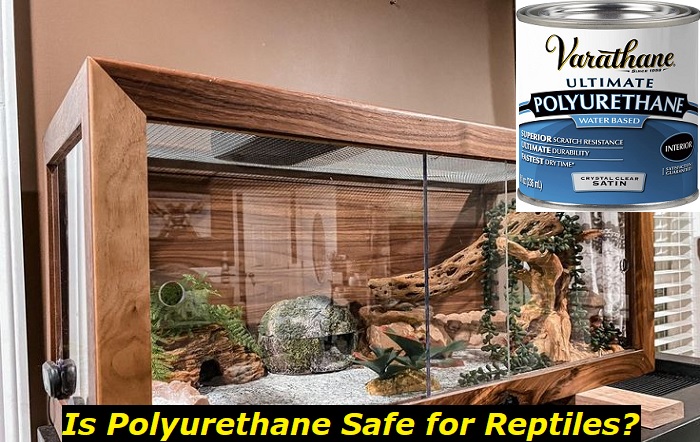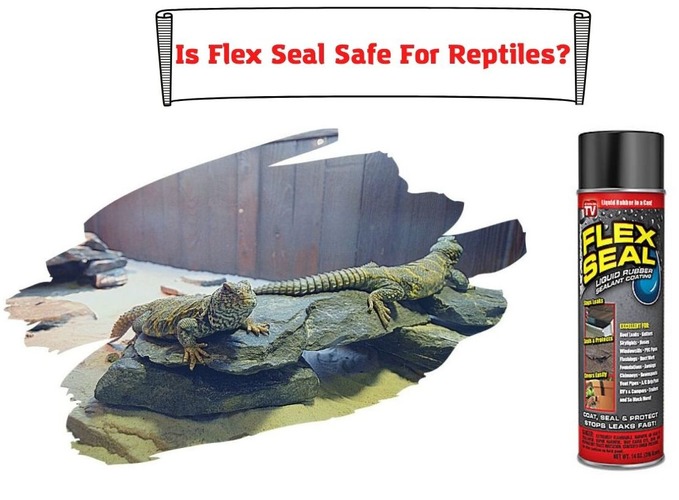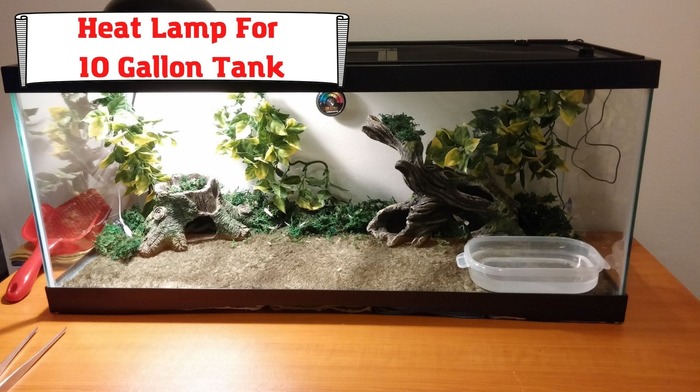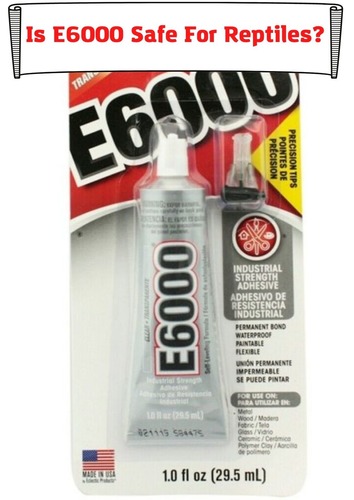Although many durable sealants are on the market, polyurethane is one of the most resorted to when building a reptile enclosure.
However, reptile enthusiasts and responsible pet owners can ask whether polyurethane is safe for reptiles. This question is crucial, as an enclosure is very much an enclosed space where your pet lives.
Here are some essential things you should know about the safety of polyurethane for your reptiles.

What Is Polyurethane?
Polyurethane exists in several forms but is a plastic material that can be modified into rigid or liquid plastic depending on the type of project it is to be used for.
In the reptile keeping hobby, polyurethane is often used to construct various reptile enclosures. The most common uses of polyurethane are: a moisture-repelling sealant in the enclosure and a protective wood finish.
Essentially, polyurethane is made with two major chemical compounds: polymers and urethane. In the chemical process, the urethane groups join the polymer to make a very resourceful material that can be used in many ways.
In the reptile-keeping hobby, polyurethane is used to seal the wood of the enclosure. It comes in water-based and oil-based forms. They are usually used as wood sealers, as a top coat to seal the wood and make it moisture-repellent.
But the choice of whether to buy a water-based or an oil-based polyurethane depends on the nature of your project.
Many DIYers who build reptile enclosures prefer water-based polyurethane because it makes the grain structure visible from the inside of the enclosure.
Another reason they use water-based polyurethane is that it gives the enclosure a more simplistic look.
Is Polyurethane Safe for Reptiles?
Water-based polyurethane is usually preferred to oil-based polyurethane. Many reptile owners and DIYers who build reptile enclosures opine that the oil-based is unsafe for reptiles because it contains volatile organic compounds that are harmful to reptiles.
While this is true to an extent, you want to keep in mind that both water-based and oil-based polyurethane have some levels of volatile organic compounds, which can be a problem for your reptiles. The only difference is that water-based polyurethane is almost odorless and has a significantly lower level of volatile organic compounds than oil-based polyurethane.
You can coat your reptile enclosures with oil-based or water-based polyurethane if you take some precautions to ensure your pet’s safety.
Perhaps you want to choose water-based polyurethane over oil-based forms because of how the color turns out. Solvent-based polyurethane is notorious for changing the color of the wood to a somewhat amber-yellow color over time. This is not the case with water-based polyurethane, which retains the natural look of the enclosure.
So, what is there to know about making polyurethane safe for reptiles?
Using Water-Based Polyurethane
Water-based polyurethane is safe for reptiles after it has fully cured. Water-based polyurethane works like oil-based polyurethane, but there are a few differences. The most important thing that deals with your pet’s safety is the amount of volatile organic compounds in it.
The water-based polyurethane contains a very low amount of volatile organic compounds and less odor. These features make it more appealing to reptile owners who wish to build an enclosure for their pets.
Other features of water-based polyurethane include its faster drying time and how it only enhances the wood color instead of changing it. The faster drying time makes it possible to apply all 3 or more coats in a day, unlike oil-based polyurethane.
Using Oil-based Polyurethane
Oil-based polyurethane is often avoided as being too harmful because it is loaded with more volatile organic compounds than water-based polyurethane. It also has a stronger odor which can cause respiratory issues for your pet.
The strong odor is so bad that even buildings and condo management do not allow the use of oil-based polyurethane as the toxic fumes are strong enough to permeate the building, affecting many other people in the building.
Although this strong odor is experienced only during the application stage and the curing stage, it may still linger for a couple of months in the curtains, which can be an issue for sensitive people with respiratory issues.
This means that even after it has cured in the enclosure, your pet will still be at risk of developing respiratory issues or other health challenges because of the strong lingering odor.
But you can make oil-based polyurethane safe for your pet if you let it cure for as long as necessary to eliminate the strong lingering odor.
What Are the Dangers of Using Polyurethane for My Pet Enclosure?
Both types of polyurethane contain volatile organic compounds. VOCs generally mean the toxic gasses that are emitted from certain liquid and solid materials. These volatile organic compounds can have adverse health effects on life.
The negative effects of exposure to VOCs in finishing products can be long-term or short-term, depending on the level of exposure.
Some of the VOCs in polyurethane include Xylene, Ethylbenzene, and Acetates. Many of these volatile organic compounds cause skin-related problems and respiratory issues when they come in contact with human skin or are inhaled.
The same applies to your pets, who are more sensitive because many of them rely on the senses in their skins and their sense of smell to understand and cope with their environment.
A few of the dangers that these VOCs pose for your reptile include the following:
- Skin irritation
- Irritation in your pet’s eyes, nose, and throat
- Weakness
- Breathing difficulties and even suffocation in some instances
All these can lead to more serious health challenges and even death.
But it is very important to understand that volatile organic compounds in polyurethane evaporate into the air during the curing process. This is how the VOCs are emitted into the atmosphere. The process is known as off-gassing.
If you apply polyurethane to the enclosure, you want to ensure that you let it cure fully, such that there are no odors in the enclosure.
Once fully cured, many finishing products, including polyurethane, are food safe and will not pose any harm to your pet.
Note that the Environmental Protection Agency makes the point that the concentration of VOCs is up to ten times higher in an enclosed space than outdoors. So, it is very important to ensure that the enclosure releases all its volatile organic compounds into the atmosphere before introducing your pet into the enclosure.
You can do this by allowing the polyurethane to cure fully, and not just to the touch or to a point where it can suffer abrasions.
Note:
There is a difference between cured and fully cured. While oil-based polyurethane finish may cure in a few days, it could take up to 30 days at room temperature for it to fully cure.
This essentially means that in the first 5-7 days, the solvent-based polyurethane will be dry to the touch, and the emission of the volatile organic compounds will have generally subsided even though it may still linger.
But full curing occurs when there is no emission of VOCs from the solvent-based polyurethane at all. This can take as much as a month or more at a room temperature of 65-75F.
The same applies to water-based polyurethane, but the curing time for water-based polyurethane is significantly fewer than for oil-based polyurethane. With water-based polyurethane, you can achieve a full cure within a week.
So, whether you use oil- or water-based polyurethane, your pet is safe if you allow the polyurethane to cure fully such that it does not emit any odor. If the enclosure is not fully cured, you would be putting your pet at risk if you put it in the enclosure.
Caution
There is an erroneous impression that since water-based polyurethane is a low odor, your pets can cope with it. Remember that “low-odor” means there is still some odor there and as mentioned above, VOCs tend to have a higher concentration in enclosed spaces than outdoors.
So, unless there is zero odor, it would be best not to introduce your pet to the enclosure. When you let the enclosure dry, whether you used a water-based polyurethane or an oil-based polyurethane, the enclosure will only be safe for your reptiles after it has off-gassed all of its volatile organic compounds and is completely odorless.
You can achieve this faster with water-based polyurethane than you would with oil-based polyurethane. But oil-based polyurethane tends to be more long-lasting than water-based polyurethane and may take more than 30 days to become odorless.
However, it is worth the wait.
Another thing you want to remember is never to leave the application rags in or around the enclosure. Applying the polyurethane first before installing any decorations for your reptile would also be better.
This is because rags used to apply polyurethane have been known to combust spontaneously.
So, if you have a rag or any similar material that can absorb the liquid polyurethane and dry out, such as pieces of decorations, it could combust later and set your enclosure and your pet on fire, especially if the heat lamp supplies enough heat to trigger the fire.
Ensure that the polyurethane is applied to the bare wood only. Decorations must be installed last.
- Dubia Roach Egg Sack: How To Understand if It’s Healthy? - January 2, 2023
- How To Feed African Dwarf Frog While on Vacation? - December 26, 2022
- Baytril for Bearded Dragon: Here’s What You Should Know - December 19, 2022



